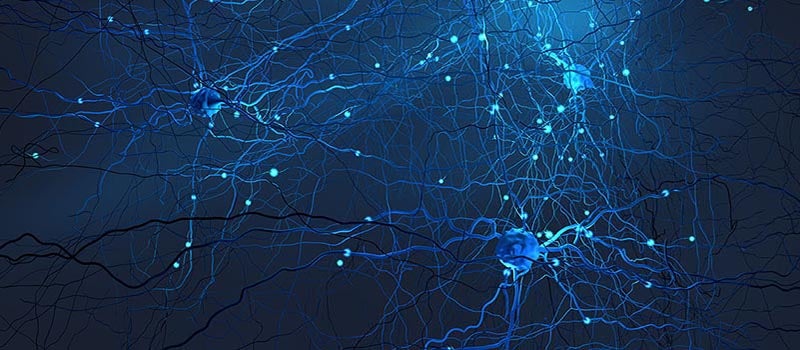Neuromuscular Disorders
What are neuromuscular disorders?
Diseases that affect the nerves that control your voluntary muscles are called neuromuscular disorders. Voluntary muscles are the ones you can control, like in your arms and legs. Your nerve cells send the messages that control these muscles. When the nerve cells become unhealthy or die, those messages don’t work, and communication between your nervous system and muscles breaks down. Because of this, your muscles weaken and waste away.
Many neuromuscular diseases run in families or happen because there is a mutation in your genes. Sometimes, an immune system disorder can cause them. Most of them have no cure. The goal of treatment is to improve symptoms, increase mobility and lengthen life.
Types of neuromuscular disorders
Myasthenia Gravis
Myasthenia gravis is a chronic disease marked by different levels of weakness in the voluntary muscles of the body (like the eyes and throat). The muscles that control breathing and neck and limb movements can also be involved.
The first symptoms of myasthenia gravis may be:
- Weakness of the eye muscles
- Difficulty in swallowing
- Slurred speech
Myasthenia gravis is an autoimmune disease because the immune system—which normally protects the body from foreign organisms—mistakenly attacks itself. It is not inherited or contagious.
Myasthenia gravis can’t be cured, but it can be controlled. Treatment options include:
Medicines: some increase muscle strength, and others cause the body to make fewer abnormal antibodies. They have to be used with careful medical follow up because they may cause major side effects
Surgery: thymectomy is the surgical removal of the thymus gland. The thymus gland is often abnormal in people with myasthenia gravis. Removing it improves symptoms in some people.
With treatment, most people with myasthenia can greatly improve their muscle weakness. Some cases may go into remission temporarily, and muscle weakness may disappear so that they can stop taking medicine for it.
Amyotrophic lateral sclerosis (ALS)
Amyotrophic lateral sclerosis (ALS), sometimes called Lou Gehrig’s disease, is a neurological disease that attacks the nerve cells responsible for controlling voluntary muscles. It progresses rapidly and is always fatal. In ALS, both the upper motor neurons and the lower motor neurons degenerate or die, and stop sending messages to muscles at all. Unable to function, the muscles gradually weaken, waste away and twitch. Eventually the brain loses its ability to start and control voluntary movement.
Symptoms are usually first noticed in the arms and hands, legs or swallowing muscles. As ALS progresses, they include:
- Muscle weakness and atrophy on both sides of the body
- Inability to move the arms and legs, and to hold the body upright
- When muscles in the diaphragm and chest wall fail to function properly, individuals lose the ability to breathe without support (such as from a ventilator)
The disease does not affect a person’s ability to see, smell, taste, hear or recognize touch. Scientists don’t yet know the cause of ALS, or why it strikes some people and not others.
- There’s no cure has for ALS yet, but many types of treatments are used:
- The drug riluzole, the only drug approved by the Food and Drug Administration specifically to treat ALS. It prolongs life by 2-3 months, but it doesn’t relieve symptoms
- Other drugs can help ALS patients with spasticity, pain, panic attacks, and depression
- Physical therapy, occupational therapy, and rehabilitation may help to prevent joint immobility and slow muscle weakness and atrophy
- Individuals with ALS may eventually consider forms of mechanical ventilation (respirators).
Multiple Sclerosis
Multiple sclerosis (MS) is an unpredictable disease of the central nervous system that can range from mild to severe. In MS, the body “turns on itself” and attacks a substance called myelin that insulates the nerves. Most people experience their first MS symptoms between ages 20-40—often blurred or double vision, red-green color distortion, or even blindness in one eye.
Symptoms of MS can include:
- Muscle weakness in their extremities and difficulty with coordination and balance.
- Paresthesias, abnormal sensory feelings such as numbness, prickling or “pins and needles” sensations
- Speech impediments, tremors and dizziness
- Mild cognitive impairments such as difficulties with concentration, attention, memory and poor judgment
- Depression
There isn’t a cure for MS yet, and many patients do well with no therapy at all, especially since many drugs have serious side effects and some carry significant risks. However, there are a number of medications to treat the condition:
- Three forms of beta interferon (Avonex, Betaseron, and Rebif)
- A synthetic form of myelin basic protein, called copolymer I (Copaxone)Teriflunomide and dimethyl fumarate
- The immunosuppressant treatment Novantrone (mitoxantrone) to treat advanced or chronic MS
- Dalfampridine (Ampyra) to improve walking in individuals with MS
- Steroids, which don’t affect the course of MS over time, but can reduce the duration and severity of attacks in some patients
- Muscle relaxants and tranquilizers to treat spasticity, which can occur either as a sustained stiffness caused by increased muscle tone or as spasms that come and go
Physical therapy and exercise can help preserve remaining function, and patients may find that aids like foot braces, canes, and walkers can help them remain independent and mobile.

